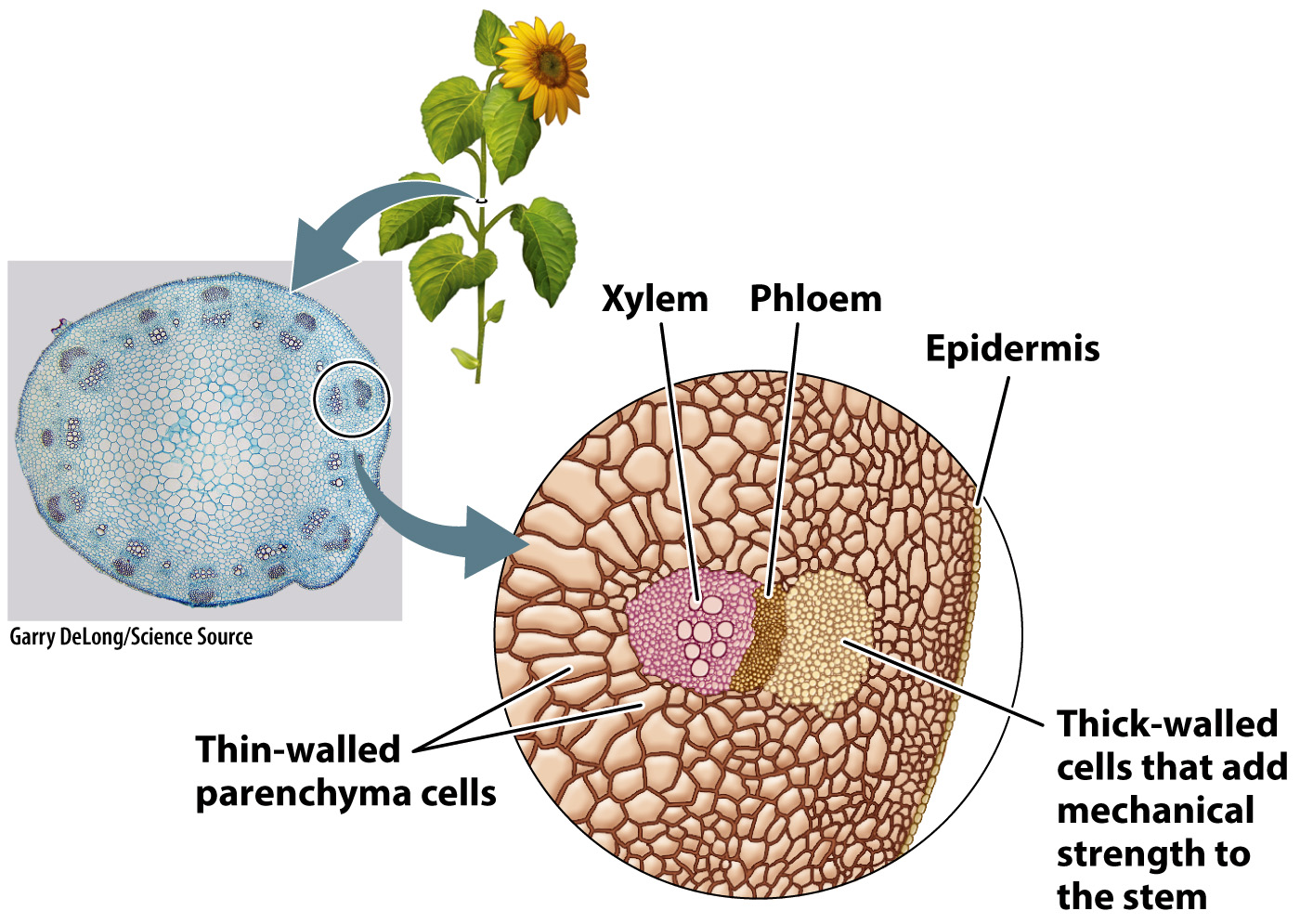29.3 The Stem: Transport of Water Through Xylem
On a summer day, a tree can transport many hundreds of liters of water from the soil to its leaves. Impressively, this feat is accomplished without any moving parts. Even more remarkably, trees and other plants transport water without any direct expenditure of energy. The structure of vascular plants allows them to use the evaporation of water from leaves to pull water from the soil.
Fig. 29.9 shows the cross section of a sunflower stem. Like a leaf, it has a surface layer of epidermal cells. This layer encloses thin-

In addition, both the xylem and the phloem transport dissolved nutrients and signaling molecules, such as hormones, throughout the plant. Importantly, the xylem is the pathway by which mineral nutrients absorbed from the soil are transported to the aboveground portions of the plant. The total concentration of solutes in the xylem, however, is very low (typically less than 0.01%). We thus focus on the xylem as a means for transporting water from soil to leaves and discuss the uptake of nutrients in section 29.5.